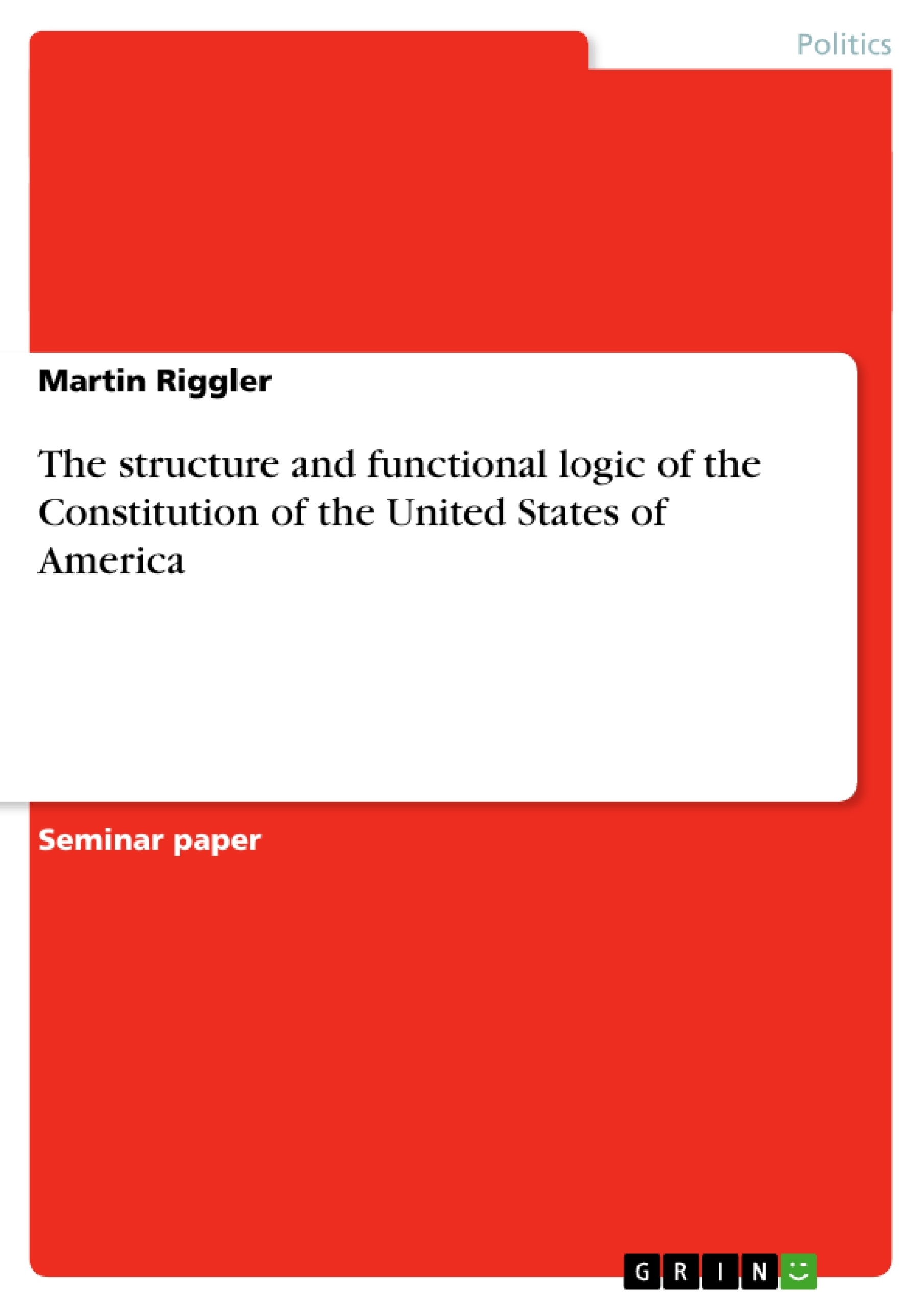In 1787 the delegates of the first twelve states, with only Rhode Island as the thirteenth state of the former British colonies that would later form the United States of America not participating, had gathered in Philadelphia to revise the Articles of the Confederation. As it turned out, what came to known as the Philadelphia Convention, decided to develop and propose a new constitution without actually being told to do so. This process finally led to the Constitution of the United States of America, which was then adopted and signed by 39
of the 55 convention’s participants on September 17th the same year...
Inhaltsverzeichnis (Table of Contents)
- Introduction
- The Philadelphia Convention and the Creation of the Constitution
- Structure of the Constitution
- Articles One to Three: The Form of Government
- Article Four: States' Powers and Limits
- Article Five: The Amendment Process
- Articles Six and Seven: Federal Power and Ratification
- Functional Logic of the Constitution
- Historical Context: American Revolution and Republicanism
- Checks and Balances
- Future Considerations and Amendments
- Economic and Trade Concerns
Zielsetzung und Themenschwerpunkte (Objectives and Key Themes)
This paper examines the structure and functional logic of the United States Constitution. It explores the historical context of its creation, its key structural elements, and the principles underlying its design.
- The historical context of the Constitution's creation, including the shortcomings of the Articles of Confederation.
- The structure of the Constitution, including the separation of powers and the system of checks and balances.
- The principles underlying the Constitution, such as republicanism, liberty, and the protection of individual rights.
- The role of the Constitution in shaping the relationship between the federal government and the individual states.
- The process of amending the Constitution and its impact on the evolution of American governance.
Zusammenfassung der Kapitel (Chapter Summaries)
The introduction sets the stage by describing the Philadelphia Convention and the drafting of the Constitution. The following sections delve into the structural components of the document. Articles one through three describe the establishment of a bicameral legislature and the executive branch, touching upon the impeachment process. Article four outlines the relationship between the states and the federal government. Article five briefly discusses the amendment process, highlighting its unique characteristics. The paper then analyzes the functional logic of the Constitution, exploring its historical underpinnings in the American Revolution and the ideals of republicanism, liberty, and individual rights. The emphasis on the system of checks and balances and the foresight of the delegates regarding future amendments are also discussed. Economic and trade concerns during the Constitution’s formation are briefly mentioned.
Schlüsselwörter (Keywords)
United States Constitution, Philadelphia Convention, Articles of Confederation, separation of powers, checks and balances, federalism, republicanism, liberty, individual rights, amendment process.
- Arbeit zitieren
- Martin Riggler (Autor:in), 2008, The structure and functional logic of the Constitution of the United States of America, München, GRIN Verlag, https://www.grin.com/document/123087



